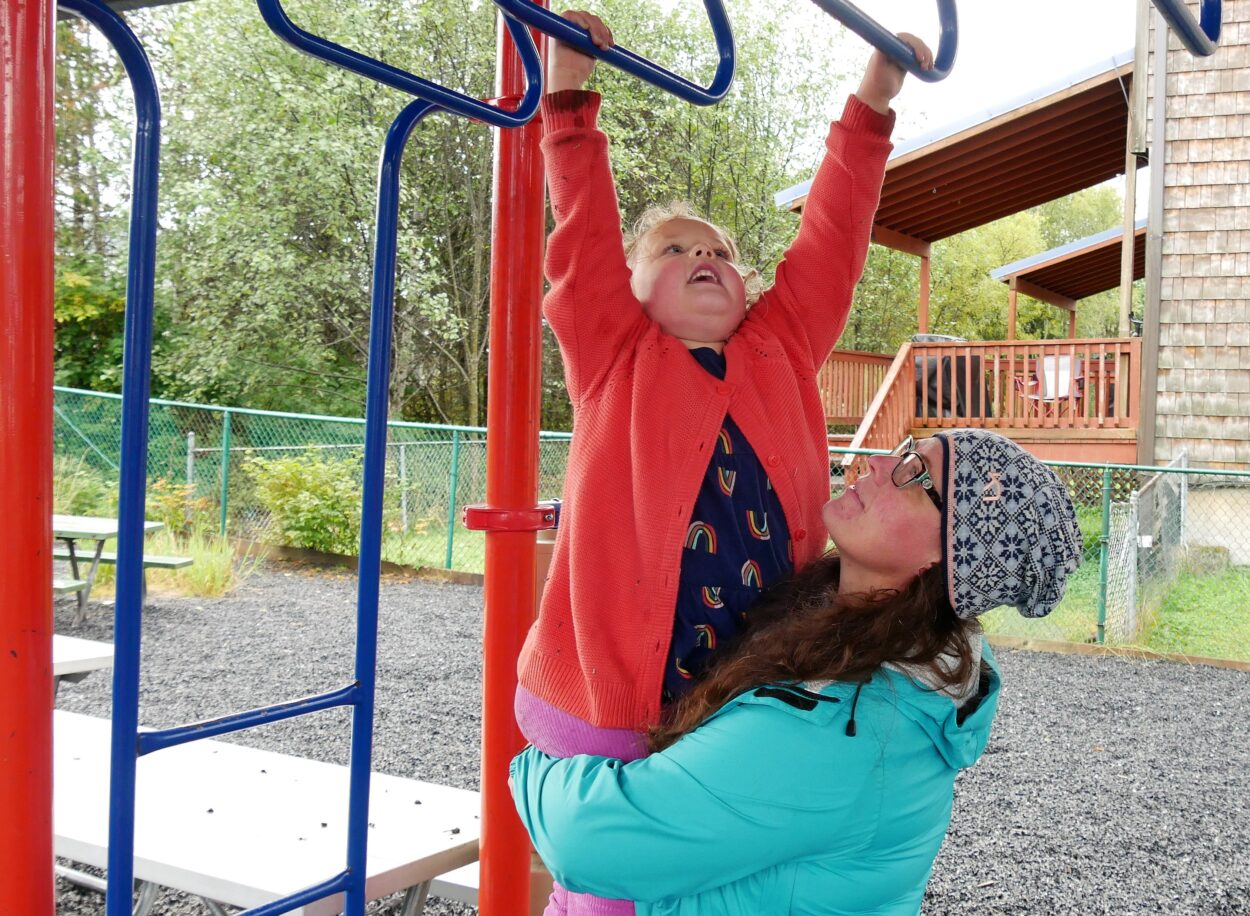
A mother and daughter in Petersburg were recently diagnosed with a heart condition that can lead to sudden cardiac arrest. However, possible death scenarios are highly preventable if the heart condition is caught early enough. KFSK’s Angela Denning spoke with the family and has this report:
5-year-old Margo Stanton Gregor loves this park. It’s close to her house and there’s a covered jungle gym for when it rains hard, like it is today.
She bounds up the slide in her orange sweater, her blonde curls bouncing.
“Mom, watch this!” she says.
Lea Stanton Gregor is an outdoorsy mom in her 40s who owns a counseling service with her husband. They’re both licensed therapists. Last year, she was diagnosed with Long QT syndrome, a condition that disrupts the heart’s electrical system compromising the heartbeat. It could prevent blood from reaching vital organs and cause SADS or Sudden Arythmia Death Syndrome. Like the name says, death could be sudden, say, if Lea was active and adrenaline was pumping.
“It was very, very challenging to first get that diagnosis,” she says. “It was very shocking.”
Last year, she started feeling like she could faint and was noticing heart palpitations. A screening showed an irregular heart rhythm and then a cardiologist diagnosed her with Long QT.
“And probably the thing that I’m most grateful for is finding this out now for her, right, as she’s growing and getting older and that maybe we’ve avoided a tragedy or a potential tragedy,” she says.
Lea had both her children tested and only Margo came back positive.

Lea: “So, unfortunately and fortunately …
Margo: “So then they figured out that I had the….
Lea: “Long QT”
Margo: “Yeah.”
Lea: “And do you take medicine now every day?”
Margo: “Yep! every morning, every night.”
The daily medicine is a beta blocker and allows Margo to play hard while not increasing her blood pressure. She has no symptoms but that could change with age. For now, Margo’s teachers and other adults know about her condition and have defibrillators nearby, which could be used to shock her heart if needed.
“Of course, the worst case scenario is sudden cardiac arrest,” Lea says. “Like we have a defibrillator at home now. We travel with that. If we’re going up into the mountains or even to our Kupreanof cabin, that’s a part of our new norm. That comes with us.”
She knows it’s unlikely that they’ll need it. Margo’s on meds and Lea was also until she opted for surgery that’s available for her type of Long QT. Surgery could also be an option for Margo when she’s older.
Growing up, Lea was an active swimmer and never knew she had a heart condition until recently. Many people are like her and survive. But some don’t. About 4,000 children die each year from SADS stemming from Long QT or other genetic heart conditions.
Lea is trying to increase awareness, sharing what she’s learned through her own experience. Cases of Long QT are often linked to family but that’s not always the case. Doctors think Lea’s started with her.
The American Pediatric Association wants earlier screening for heart issues like Lea’s to prevent SADS.
“These are potentially problematic conditions but if recognized and treated patients don’t have to suffer, they don’t have to have sudden death events,” says Dr. Susan Etheridge, a SADS expert. She practices in Utah and also holds clinics in Alaska.
Etheridge says her work as a pediatric cardiologist comes later in the prevention process. She says there needs to be more awareness among primary care providers of heart conditions like Long QT, which some say affects one in 2,000 people.
“A big interface with this population is not going to be the cardiologist but it’s going to be the general pediatrician and the family practice docs who see these patients,” Etheridge says. “[It’s] important for them to know the screening questions to ask about the patients history of fainting or about the family’s history of sudden death.”

Back in the park, Margo considers going head first down the slide.
“Um, if I go flying off please don’t…. because I might fly off,” she warns her mother.
But Margo is not the kind of kid to hold back.
“Actually, I’m going to try again and I’m going to do back first!” she exclaims.
So she does. And it starts off okay until. . .
“Oh, gosh, did you hit your face? Ouch,” Lea says to Margo, who seems a bit stunned.
But after just a minute, Margo shakes it off and is back to playing. Lea wants her daughter to be active and other kids like her. And she hopes by sharing their story, they can be.









